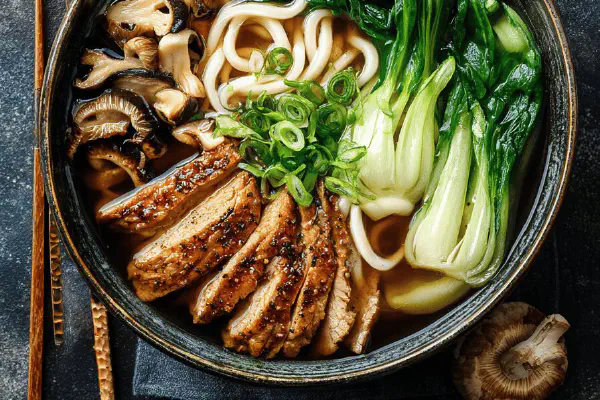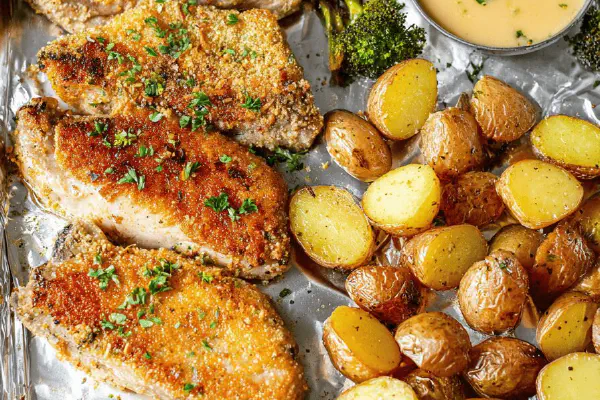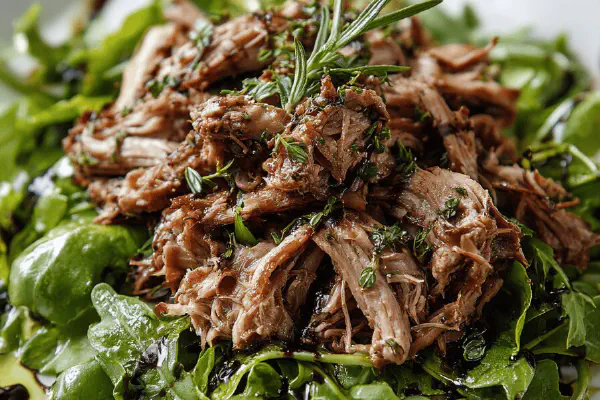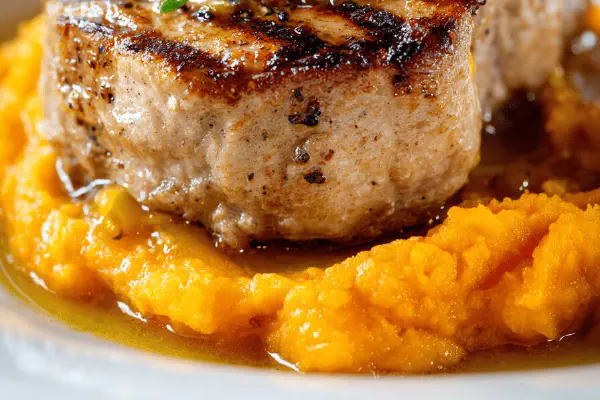Shabu-Shabu Twist

By Emma
Certified Culinary Professional
Ingredients
Broth
- 1 litre (4 cups) reduced-sodium vegetable stock
- 2 tablespoons white miso paste
- 15 ml (1 tablespoon) soy sauce
- 1 knob ginger, peeled, about 3 cm (1¼ in), smashed
- 1 strip kombu seaweed, 5 cm (2 in)
- 4 medium carrots, peeled, cut in 4 cm (1½ in) sticks
Accompaniments
- 450 g (1 lb) thinly sliced pork shoulder
- 225 g (1/2 lb) soba noodles, cooked al dente, lightly tossed in toasted sesame oil
- 225 g (1/2 lb) oyster mushrooms, cleaned and halved
- 25 g (1 cup) baby kale leaves
- 2 scallions, cut in 4 cm (1½ in) lengths
- Ponzu sauce
- Wasabi paste (optional)
About the ingredients
Method
Broth Preparation
- Start heating vegetable stock in a heavy-bottomed pot or fondue vessel. Before it boils, dissolve miso paste by whisking in a small bowl with some warm stock first; avoid lumps. Pour back in gently. Add soy sauce, smashed ginger, and kombu strip. Keep heat medium-low—no roiling boils here; you want quiet bubbles to coax flavor out without clouding stock. Let steep gently for 7–8 minutes till subtle aromas rise, ginger softens, kombu imparts that briny note. Watch for slight film forming on surface—gently skim off to avoid bitterness.
- Remove ginger and kombu precisely when scent is right—overbrewing makes broth bitter, underwhelming flavor. If unsure, squeeze a piece of ginger; a soft bite signals readiness.
- Add carrot sticks directly into broth—cook until tender but still with bite, about 6 minutes. Use fork test; fork should pierce with resistance, not mush. Remove carrots carefully with slotted spoon; set aside warm in serving bowl. Leave broth simmering at the lowest gentle bubble, do not boil.
Setting the Table
- Transfer pot to tabletop burner or fondue set with adjustable heat. Choose function preset for broth or keep temperature just below boiling point—the aim is to cook thin pork slices quickly without toughening. Have accompaniments arranged: pork shoulder, soba noodles tossed with toasted sesame oil to prevent sticking, oyster mushrooms, baby kale, and scallions.
- Serve with small bowls of ponzu; have wasabi on hand. The sharp horseradish punch cuts through the miso richness.
Cooking and Eating
- Bring pork slices to broth individually with chopsticks or fondue forks; submerge briefly—watch color flip from pink to lightly opaque, usually under 20 seconds. Don’t overcook or meat toughens. Same for veggies; mushrooms dunk just to warm through, kale wilts fast, seconds suffice.
- Noodles go in later; just enough time to reheat, avoid breaking down. Keep broth topping off with hot water or extra stock if evaporates during meal.
- Savor textures: firm noodles, tender pork, crisp-tender carrots; layering heat and cool dipping ponzu. The smell—ginger and seaweed fading sweetly in the air, combined with miso’s earthiness. Wasabi optional but punches plate.
Tips, Substitutions and Fixes
- If no kombu, seaweed flakes (wakame) can be used, but add late to avoid slimy texture. Miso can be white or red, adjust saltiness. If pork unavailable, thinly sliced chicken breast works but watch for overcooking. Oyster mushrooms can be replaced with enoki or shiitake; rinse mushrooms quickly without soaking to keep flavor.
- Carrots mustn’t over soften, trick: parboil then blitz in cold water to stop cooking, rewarm in broth at table. For thicker broth, fold in grated daikon radish at end, stirring till translucent. Sometimes broth clouds—sign of overboiling or too aggressive stirring; gentle simmer saves day, plus less evaporation.
- Keep broth covered between guests to retain warmth and moisture. Prep noodles ahead but toss hot to loosen, or they clump quickly.
- Don’t panic if broth reduces; topping up with boiling water maintains pace but reduces flavor intensity—taste and adjust with soy or miso if needed.
Cooking tips
Chef's notes
- 💡 Broth gentle heat only—no roiling boil. Watch bubbles lazy and slow, you want flavor extraction not cloudiness. Skim surface foam or film constantly; bitter can creep in fast. Miso never boils, dissolve separately to avoid clumps, or gritty spots ruin the smooth flavor. Ginger smashed, but quick removal. Oversteep means bitterness—watch aroma, feel it shift in air, like faint sea notes from kombu tell you to pull out.
- 💡 Carrots judge by firm bite, fork test. Not mushy. Parboil tricky but useful, then cold water shock stops cooking dead. Rewarm in broth before table, keeps texture bright and crisp-tender. Don’t skip cut uniform sticks, means even cooking, helps keep shape. Thin pork slices essential, thick strips turn tough fast. Pork shoulders thinly sliced, or chicken breast if no pork but watch timing close.
- 💡 Soba noodles tossed hot with toasted sesame oil; prevents sticking, adds subtle nuttiness, skips clumps that kill mouthfeel. No plain water rinse after cooking or noodles get limp. Warm noodles in broth only at table, short time, keep al dente snap. Mushrooms cleaned but quick rinse, no soak to keep earthy flavor concentrated. Oyster mushrooms swap shiitake or enoki based on what’s fresh.
- 💡 Tabletop setup needs temperature dialed down after moving pot. Keep simmer, not boil. Thin meat cooks in seconds—pink turns opaque cue. Overcook means chewy. Mushrooms just warmed. Kale wilts fast, seconds max. Keeping broth topped up with hot water or fresh stock important to avoid overly salty concentrated broth. Cover pot between guests, stops evaporation and cooling.
- 💡 If kombu missing, wakame flakes last-minute add but slimy if soaked long, add late for gentle murmur of sea flavor. Adding grated daikon radish thickens broth but must stir well, translucent signals ready. Watch broth clarity; murkiness signals over-boiling or stirring too agitated. Taste broth periodically, adjust with soy or miso if flavor softens after topping up.
Common questions
How to know broth is ready?
Smell first; subtle marine and ginger notes rising. Foam at top means simmer too high. Taste—should be balanced, not bitter. Film on surface signals oversteep. Look for gentle bubbles, no rolling boil.
Can I use chicken instead of pork?
Yes but cook quicker. Chicken breast slices thin, watch closely. Different texture, less fat. If beef, tenderloin best but pricey and fast overcook risk. Each protein swaps shifts broth flavor slightly.
What if broth becomes cloudy or bitter?
First, drop heat; rapid boil breaks clarity. Skim foam often. Bitterness usually from overcooked ginger or kombu. Remove early or cut back steep time. Fresh stock helps; reheating multiple times dulls flavor and turns cloudy faster.
How to store leftovers?
Cool broth to room temp; refrigerate in airtight container up to 3 days. Freeze if needed but miso freshness fades fast. Keep noodles separate, toss in sesame oil so they don’t clump. Pork and veggies store but best eaten fresh; texture fades fast when reheated.



